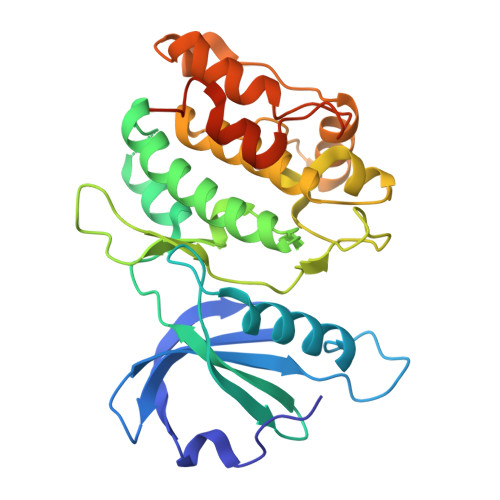Discovery and optimization of isoliquiritigenin as a death-associated protein kinase 1 inhibitor.
Yokoyama, T., Hisatomi, K., Oshima, S., Tanaka, I., Okada, T., Toyooka, N.(2024) Eur J Med Chem 279: 116836-116836
- PubMed: 39243455
- DOI: https://doi.org/10.1016/j.ejmech.2024.116836
- Primary Citation of Related Structures:
9INV, 9INW, 9INX - PubMed Abstract:
Death-associated protein kinase 1 (DAPK1) is a phosphotransferase in the serine/threonine kinase family. Inhibiting DAPK1 is expected to be beneficial in treating Alzheimer's disease and protecting neuronal cells during cerebral ischemia. In this study, we demonstrated that the natural chalcone isoliquiritigenin inhibits DAPK1 in an ATP-competitive manner, and we synthesized halogen derivatives to amplify the inhibitory effect. Among the compounds tested, the chlorine, bromine, and iodine derivatives exhibited high DAPK1 inhibitory activity and binding affinity. Crystal structure analysis revealed that this improvement is attributable to the halogen atoms fitting well into the hydrophobic pocket formed by I77, L93, and I160. In particular, the chlorine derivative showed a significant enthalpic contribution to the interaction with DAPK1, suggesting its potential as a primary compound for new DAPK1 inhibitors.
Organizational Affiliation:
Faculty of Pharmaceutical Sciences, University of Toyama, 2630 Sugitani, Toyama, 930-0914, Japan. Electronic address: tyokoya3@pha.u-toyama.ac.jp.




















